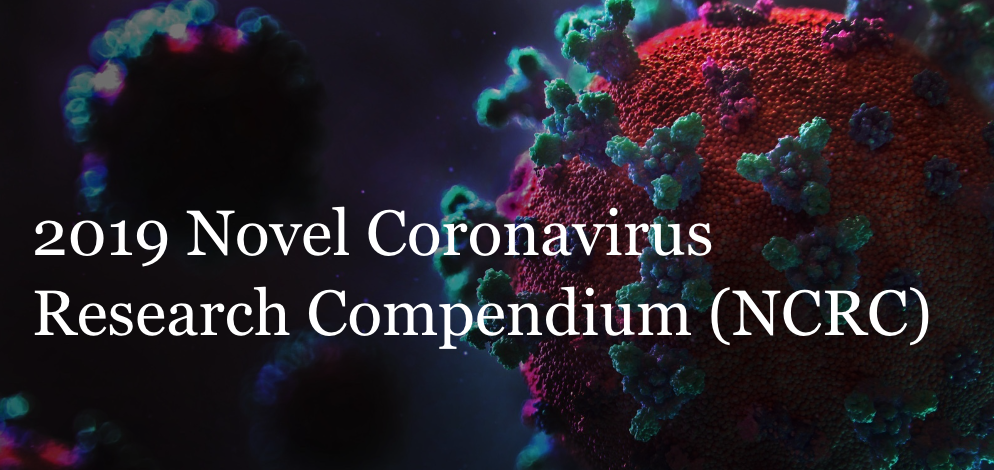Transmission potential of vaccinated and unvaccinated persons infected with the SARS-CoV-2 Delta variant in a federal prison, July—August 2021
This article has been Reviewed by the following groups
Listed in
- Evaluated articles (ScreenIT)
- Evaluated articles (NCRC)
- Evaluated articles (Rapid Reviews Infectious Diseases)
Abstract
Article activity feed
-
-

Tyler Harvey
Review 1: "Transmission Potential of Vaccinated and Unvaccinated Persons Infected with the SARS-CoV-2 Delta Variant in a Federal Prison, July-August 2021"
-

Strength of evidence
Reviewer: T Harvey (Yale) | 📗📗📗📗◻️
-

Our take
The study, available as a preprint and thus not yet peer reviewed, compared viral shedding among 78 vaccinated people and 15 unvaccinated people infected with the Delta variant of SARS-CoV-2 incarcerated at a Texas prison in July and August 2021. They found no differences in the duration of SARS-CoV-2 PCR test positivity (13 days) or duration of viable virus shedding between vaccinated and unvaccinated people (5 days). The study included a small sample of unvaccinated individuals which could limit the ability to detect differences between the groups and it is unclear if the participants included in the study are representative of all potential participants eligible for the study. Nonetheless, the study suggests that if someone vaccinated against SARS-CoV-2 is infected with the Delta variant, they will likely have …
Our take
The study, available as a preprint and thus not yet peer reviewed, compared viral shedding among 78 vaccinated people and 15 unvaccinated people infected with the Delta variant of SARS-CoV-2 incarcerated at a Texas prison in July and August 2021. They found no differences in the duration of SARS-CoV-2 PCR test positivity (13 days) or duration of viable virus shedding between vaccinated and unvaccinated people (5 days). The study included a small sample of unvaccinated individuals which could limit the ability to detect differences between the groups and it is unclear if the participants included in the study are representative of all potential participants eligible for the study. Nonetheless, the study suggests that if someone vaccinated against SARS-CoV-2 is infected with the Delta variant, they will likely have similar viral shedding patterns to unvaccinated individuals.
Study design
prospective-cohort
Study population and setting
The study was to identify differences in PCR positivity, Ct value, and virus culture between vaccinated and unvaccinated individuals with SARS-CoV-2 infection during a SARS-CoV-2 outbreak in a Texas prison during July 12 to August 4 2021. The study identified 189 people who tested positive for SARS-CoV-2 infection and 95 (50%) consented to participate. Each participant had a nasal swab collected for 10 days following onset of illness (ascertained by self-report) or date of first positive test. An additional specimen was collected from all participants on August 6, regardless of whether they finished the 10 day testing regimen or not. Specimens were tested by reverse transcriptase-polymerase chain reaction (RT-PCR) and cycle threshold (Ct) were reported. Virus culture was attempted from specimens collected on testing days 0, 3, 5, 7, or 9 days since onset, and whole genome sequencing was attempted for one specimen with Ct <30 per participant. Participants were categorized as fully vaccinated if they had completed all recommended doses more than 14 days before the outbreak start. The researchers compared RT-PCR positivity, Ct values, and viral culture positivity, between vaccinated and unvaccinated groups. They also assessed duration of shedding since onset by the type of vaccine received (Moderna, Pfizer, or Janssen) among those vaccinated.
Summary of main findings
Of the 95 participants, 78 (82%) were fully vaccinated and 15 (16%) were unvaccinated, while 2 (2%) were partially vaccinated and not included in later analyses. Of these participants, 978 specimens were collected. There were no differences between vaccinated and unvaccinated individuals in terms of duration of RT-PCR positivity (median 13 days vs. median 13 days), or viral culture positivity (median: 5 days vs. median 5 days). Among those fully vaccinated, however, individuals who received Moderna had a shorter duration of viral culture positivity than those who received Pfizer or Janssen. Individuals with the Pfizer vaccine completed their vaccine regiment significantly earlier (IQR: 131– 131 days) compared to those who received Moderna (IQR: 81 – 82 days) and Janssen (IQR: 46 – 70 days). All 64 successfully sequenced specimens (100%) were the Delta (B.1.617.2) variant.
Study strengths
The primary study strength was the consistency of testing conducted, with 10 consecutive days of samples collected for all participants. Additionally, they completed viral cultures in addition to RT-PCR, providing evidence of shedding of infectious virus and not just viral RNA.
Limitations
The primary limitation of the study was the relatively low consent rate, with only 50% of those approached being included in the study. It is not possible to confirm without further information about people in the housing unit, but there may be some selection bias in forming the study sample. Additionally, they only enrolled a few unvaccinated participants, which may reduce power and bias estimates towards the null. Additionally, symptom onset was self-reported and may be subject to imperfect recall, which could affect estimates, and bias towards the null. While the study looked at differences between the vaccines in duration of disease, individuals who completed the Pfizer vaccine earlier, on average, than those who completed the Moderna, and those who completed the Janssen. Therefore, it is not clear if differences in viral shedding related to vaccine type reflects different biological responses to the vaccine, or potential waning immunity due to vaccine timing.
Value added
This study shows that vaccinated individuals who become infected with the Delta variant can still shed viable virus and could infect others.
-

SciScore for 10.1101/2021.11.12.21265796: (What is this?)
Please note, not all rigor criteria are appropriate for all manuscripts.
Table 1: Rigor
Ethics IRB: This activity was reviewed and approved by the BOP Research Review Board and CDC and conducted consistent with applicable federal law and CDC policy.*
Consent: All persons choosing to participate signed informed consent forms, which were provided in English and Spanish.Sex as a biological variable not detected. Randomization not detected. Blinding not detected. Power Analysis not detected. Cell Line Authentication not detected. Table 2: Resources
Experimental Models: Cell Lines Sentences Resources Specimens selected for culture were used to perform limiting-diluting inoculation of Vero CCL-81 cells expressing TMPRSS2, and cultures showing evidence of cytopathic effect were tested by RT-PCR for the … SciScore for 10.1101/2021.11.12.21265796: (What is this?)
Please note, not all rigor criteria are appropriate for all manuscripts.
Table 1: Rigor
Ethics IRB: This activity was reviewed and approved by the BOP Research Review Board and CDC and conducted consistent with applicable federal law and CDC policy.*
Consent: All persons choosing to participate signed informed consent forms, which were provided in English and Spanish.Sex as a biological variable not detected. Randomization not detected. Blinding not detected. Power Analysis not detected. Cell Line Authentication not detected. Table 2: Resources
Experimental Models: Cell Lines Sentences Resources Specimens selected for culture were used to perform limiting-diluting inoculation of Vero CCL-81 cells expressing TMPRSS2, and cultures showing evidence of cytopathic effect were tested by RT-PCR for the presence of SARS-CoV-2 RNA. Vero CCL-81suggested: NoneSoftware and Algorithms Sentences Resources 10 Whole genome sequencing (WGS) was performed for one RT-PCR-positive specimen per participant with Ct less than 30 (per sequencing laboratory standard protocols). WGSsuggested: NoneResults from OddPub: We did not detect open data. We also did not detect open code. Researchers are encouraged to share open data when possible (see Nature blog).
Results from LimitationRecognizer: We detected the following sentences addressing limitations in the study:This report is subject to several limitations. Due to the small proportion of participants who were not fully vaccinated (19%), statistical comparisons on the basis of vaccination status were underpowered, and negative findings reported here warrant cautious interpretation. To increase the sample size of this group, two partially vaccinated participants were included, potentially diluting the characteristics of unvaccinated participants. However, our conclusions did not change when analyses were performed excluding these two participants. Similarly, only four participants had known prior infection, of which a higher proportion occurred in those not fully vaccinated; therefore, these participants may appear to have slightly greater immunological protection than those without prior infection. On average, unvaccinated participants enrolled earlier in the outbreak and later in their course of infection than vaccinated participants; we utilized Turnbull estimation in survival analyses to account for the possibility of interval censoring in this population. All symptom data was self-reported and collected at the end of the specimen collection period, which may have impacted the accuracy of participants’ recall related to the date of symptom onset. Ct values are semi-quantitative indicators of viral RNA levels and cannot be interpreted as quantitative markers of viral load or infectiousness. To avoid drawing quantitative conclusions around Ct values, we conservatively utilized non-p...
Results from TrialIdentifier: No clinical trial numbers were referenced.
Results from Barzooka: We did not find any issues relating to the usage of bar graphs.
Results from JetFighter: We did not find any issues relating to colormaps.
Results from rtransparent:- Thank you for including a conflict of interest statement. Authors are encouraged to include this statement when submitting to a journal.
- Thank you for including a funding statement. Authors are encouraged to include this statement when submitting to a journal.
- Thank you for including a protocol registration statement.
Results from scite Reference Check: We found no unreliable references.
-



